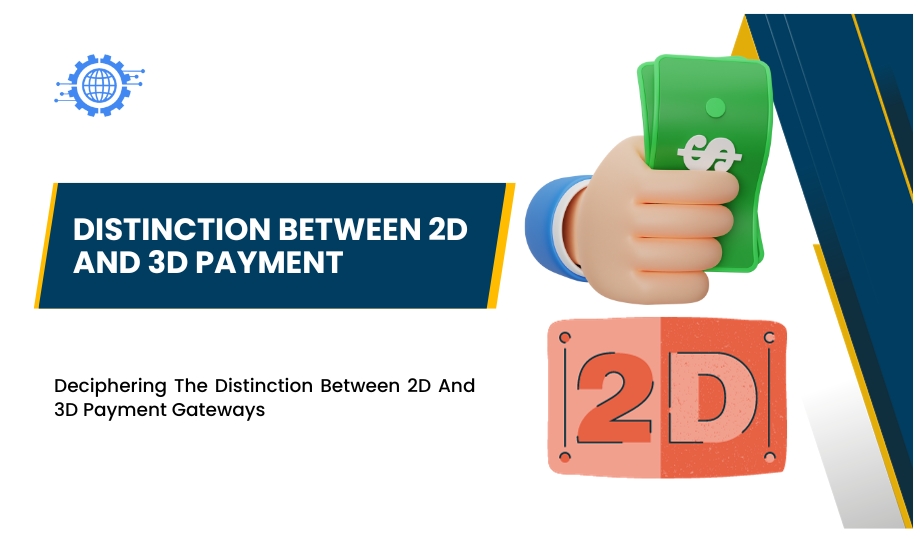In an increasingly digitized world, online payments have become an integral part of our lives. We carry out transactions through 2D and 3D payment gateways from the convenience of our homes, saving us time and effort. This digital transformation has made financial transactions more accessible than ever. However, do you truly understand these payment gateways and the choice between 3D and 2D? If not, don’t worry; we’re here to clarify this for you.
Let’s begin by exploring the concept of payment gateways.
Understanding Payment Gateways
A payment gateway acts as a vital facilitator for online transactions, enabling merchants to accept payments over the internet. During this process, customer credit card or debit card details are collected to complete the transaction. The key stakeholders involved are not limited to just merchants and customers; they also encompass issuing banks (the institutions that grant debit/credit cards) and acquiring banks (the entities receiving payments from customers). A reliable payment gateway ensures smooth and secure transaction processing.
Now, let’s differentiate between the two main types of payment gateways, namely 2D and 3D.
2D Payment Gateway:
A 2D payment gateway is a type that processes payments without an additional security check, such as One-Time Password (OTP). It merely requires the customer’s credit/debit card details, including the card number, expiry date, and CVV. It is known for its simplicity, convenience, and time efficiency.
Popular examples of 2D payment gateways include PayU, Go Payments Inc, Braintree, among others. These gateways are widely used in the USA, Canada, and various European countries for online transactions.
3D Payment Gateway:
On the other hand, 3D payment gateways introduce an additional layer of security through OTP verification. A One-Time Password is required to validate the payment before deducting the amount from the customer’s bank account. The payment process in 3D gateways involves collecting debit/credit card details on the merchant’s page, followed by sending an OTP to the customer’s mobile. Once the correct OTP is entered, the payment is authorized.
Prominent examples of 3D payment gateways include Netpay, GoPay, SecurePay, and others.
3D payment gateways come in two variants:
a) 3D Secure 1:
3D Secure 1 (3DS1) was the original version of the 3DS protocol launched by Visa in 1999. It was designed to secure online shopping on desktops, as smartphones were not prevalent at the time. However, it wasn’t compatible with mobile devices, which led to the development of 3D Secure 2.
b) 3D Secure 2:
3D Secure 2 (3DS2) offers a superior user experience and enhanced data collection to mitigate online fraud risks. It provides real-time, secure pipelines for merchants.
Key Differences Between 2D and 3D Payment Gateways:
Added Security:
3D payment gateways offer a higher level of security with OTP verification, safeguarding customers against online fraud during shopping. In contrast, 2D gateways solely rely on card details, making them less secure.
Parties Involved:
2D payment gateways involve two parties – the merchant as the acquirer and the customer as the issuer. 3D gateways, in addition to these two, incorporate an interoperable payment environment (server, types of cards, etc.).
Now that we’ve understood the differences, let’s delve into the potential risks and advantages associated with each.
Risks Associated with 2D Payment Gateways:
Security:
2D gateways lack the extra layer of security provided by OTP verification. This makes it challenging to identify the person inputting card details, potentially exposing these details to fraudulent activities.
Frauds and Chargebacks:
Hackers can easily pose as customers, making fraud easier. The absence of OTP verification can lead to a higher risk of chargebacks and multiple fraudulent activities.
Compliance and Regulations:
In certain regions, such as India, regulatory guidelines require the use of 3D payment gateways. Using a 2D gateway may result in missed opportunities. However, some countries outside India still allow the use of 2D gateways.
Reputation Damage:
As consumer awareness about online security and cybercrimes grows, they tend to perceive 2D gateways as unsafe. This can negatively affect the reputation of merchants using these gateways, eroding customer trust.
Advantages of 3D Payment Gateways:
Higher Security:
3D gateways provide added security with OTP verification. Customers are directed to enter a one-time password sent to their registered mobile numbers, making it a secure process.
Enhanced Reputation:
Customers value the security provided by 3D gateways, enhancing trust in merchants using them. Merchants can build credibility among customers by offering 3D gateways as a payment method.
Safe Cross-Border Transactions:
International transactions often come with increased cybercrime risks. 3D gateways mitigate risks for both customers and merchants, ensuring secure and efficient payment processes.
Reduced Frauds and Chargebacks:
Due to OTP verification, hackers face barriers to unauthorized transactions, resulting in lower fraud rates and fewer chargebacks.
Conclusion:
While both 2D and 3D payment gateways serve their purpose, the latter offers more benefits and security. As businesses expand globally, 3D payment gateways encourage customer trust and safety in both national and international transactions. The Strong Customer Authentication (SCA) via OTP makes 3D payment gateways a widely used and secure option. In summary, 2D gateways entail risks, while 3D gateways provide a safe passage for online transactions.

